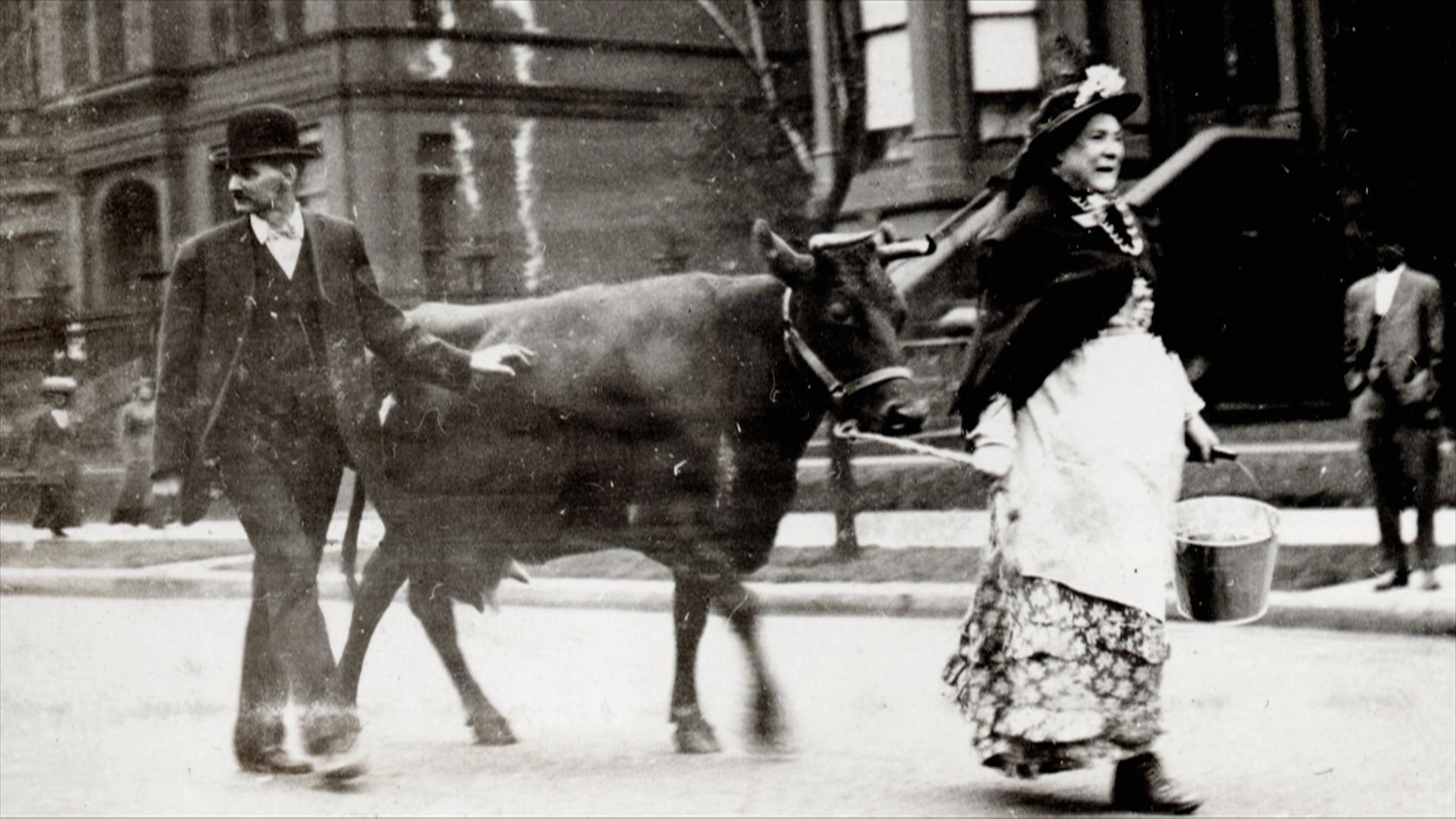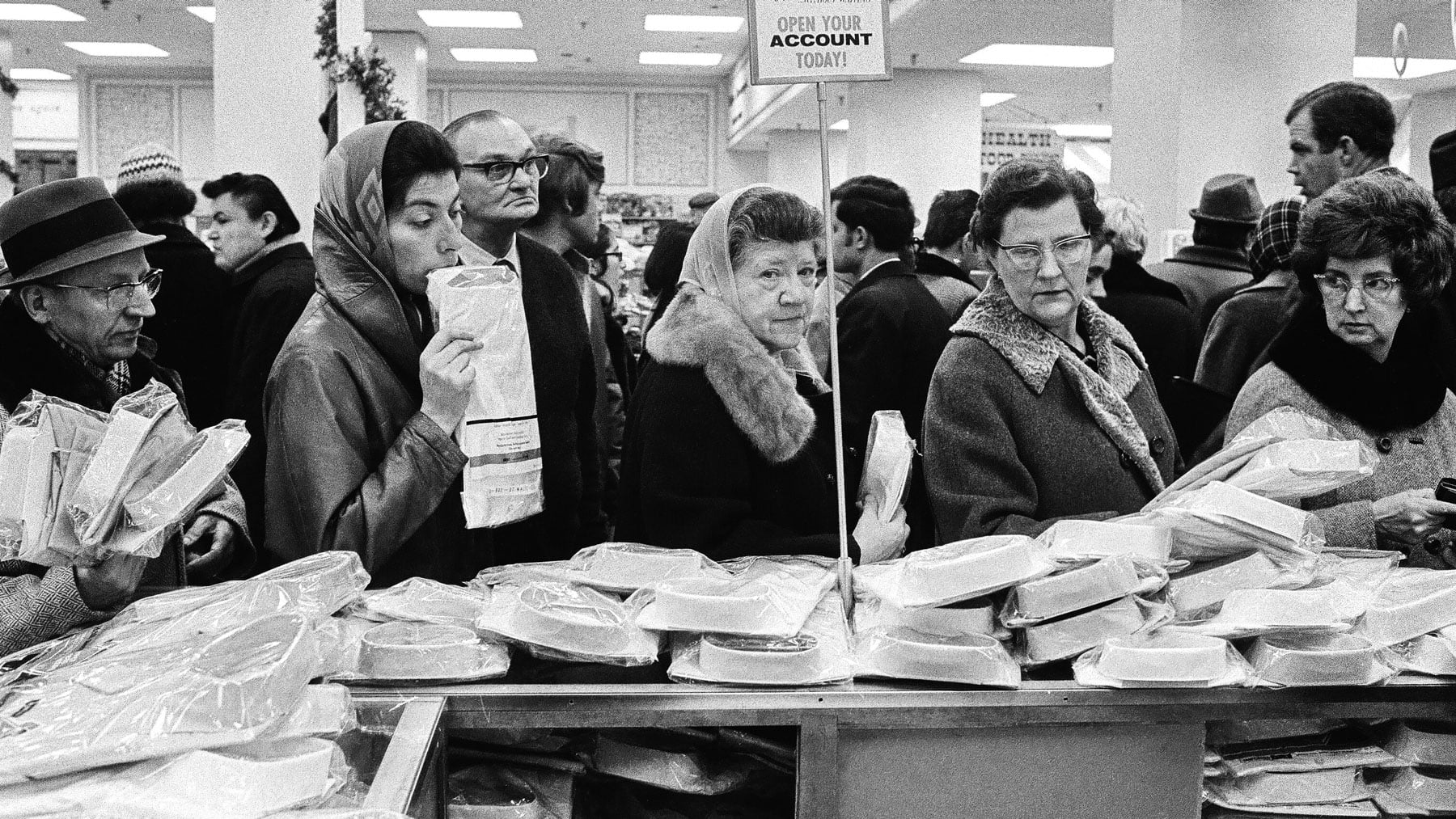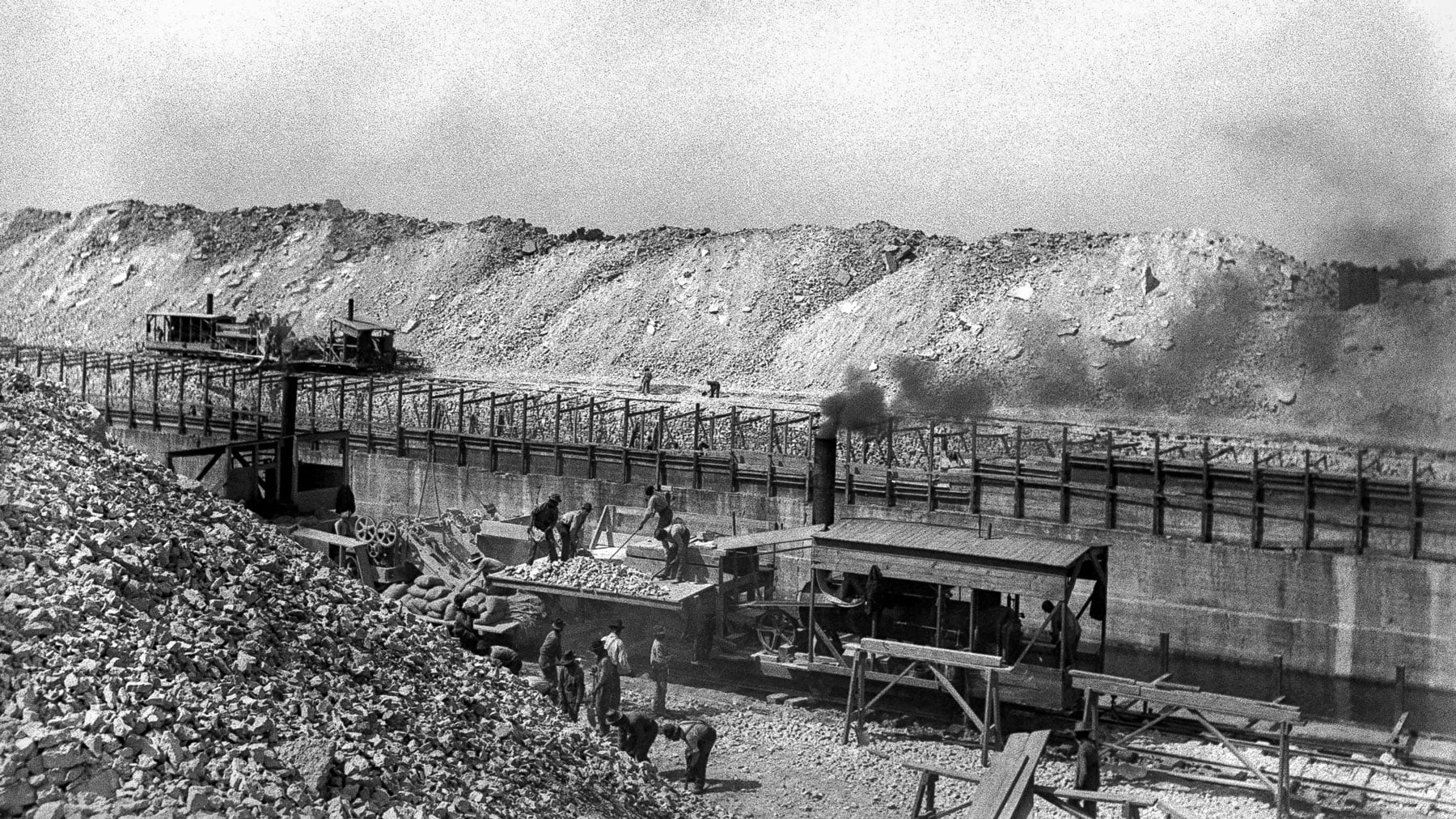There’s a common myth that pops up anytime the Chicago Fire of 1871 comes up in conversation: that a woman named Catherine O’Leary was milking her cow when the cow kicked over a lantern, igniting the barn and starting the fire that would destroy much of the city.
But then there’s the reality: an Irish immigrant who was demonized and harassed by the press, whose life was turned upside down by a false report in a newspaper. Mrs. O’Leary’s defamation after the flames died out was due in part to her status as an Irish immigrant woman, according to one historian.
“Why does she get blamed? Well, she's Irish. She's an immigrant. She's Catholic. And she's a woman. ‘Only a woman would be stupid enough to bring a lantern and put it next to a cow's foot.’ I mean that's a stereotype that's very prevalent at the time period,” said Dominic Pacyga, emeritus professor of history at Columbia College Chicago.

Understanding the immigrant communities – and the prejudices against them – in Chicago in the period around the Chicago Fire of 1871 is key to understanding Mrs. O’Leary’s story.
“As early as the 1840s, people began to ask the ultimate Chicago question: ‘What are you?’ And ‘What are you?’ means ‘What's your ethnicity?’” Pacyga said. He said that question wasn’t necessarily offensive at the time, but one whose answer was a point of pride for some immigrant groups.
Immigrants first started arriving in Chicago in large numbers the 1840s and 1850s, not long after the city’s founding in 1833. At the time, most immigrants arriving in Chicago were Irish, fleeing the potato famine and years of political conflict with England. By 1850, Germans had become the largest immigrant group, making up one-sixth of the city’s population. There were other groups, too – Scandinavians, Bohemians, and some Poles. There was also a small community of Black migrants from the South, although Black Americans wouldn’t move to Chicago in large numbers until the Great Migration, which began around World War I. According to Donald Miller in The City of the Century, in 1870, more than half the city’s population was foreign-born.
The types of jobs immigrants worked varied by group. According to Pacyga, Germans, along with some Bohemians, tended to arrive with more skills, so they worked as leaders in the stockyards or as skilled butchers or bakers. Germans tended to settle throughout the city, though many settled on the North Side along Milwaukee and Lincoln avenues. Scandinavians often worked in construction. Norwegians in particular tended to dominate the lake trade as sailors and boat workers. Scandinavians also typically lived on the North Side.

The Irish, said Pacyga, typically performed unskilled labor. Many worked on the construction of the Illinois and Michigan canal, which was completed in 1848. For this reason, there was a large Irish population in Bridgeport near the canal. The Irish would also eventually work in the stockyards, steel mills, railroads, and lumber yards. Pacyga said that, like the Germans, the Irish were spread out throughout the city. Many Irish immigrants also became tavern owners; some would later enter politics, as well.
Life was not easy for newly arrived immigrants. The poorest of the poor packed into cheaply built, wooden shanties in neighborhoods that lacked paved streets and sewers. According to Miller’s book, in the late 1840s, nearly three-quarters of families were considered “destitute,” with the wealthiest 10 percent owning 94 percent of the wealth in the city. On top of poor living and working conditions, many immigrants faced xenophobia.
“American immigration history is filled with hostility from the dominant culture constantly,” Pacyga said, “It's not only against the Irish. It's against the Germans and against the Czechs and against the Poles. And there's a good deal of anti-Catholicism [and] anti-Semitism in Chicago.”

Anti-Irish sentiments were widespread enough to routinely make it into the newspaper. Joseph Medill, co-owner of the Chicago Tribune with William Bross, often put his disdain in print for Chicagoans to encounter on a daily basis.
“The Irish [were] considered shiftless. They were uncouth. They had slovenly women,” said Chicago historian Ellen Skerrett. She said that, while conducting research, she was struck by how contemporary the anti-immigrant language printed in newspapers at the time sounds.
“You see, ‘These are aliens. They're suspect. Can they be real Americans?' All that kind of stuff was in the mix at the time of Mrs. O’Leary. It waxes and wanes with different groups coming into the city,” Skerrett said.
The prejudice against the Irish went hand-in-hand with anti-Catholic views. Many American Protestants saw immigrant Irish Catholics as loyal to Rome and the pope and therefore incapable of being loyal Americans. But for poor Irish Catholic immigrants, local parishes provided a sense of community.
“I would argue that Catholics were really using their churches and parishes to help build the city, and that Father Arnold Damen, the founder of Holy Family, was a city builder,” Skerrett said.
Skerrett said the immigrants who gave their nickels and dimes to help build the churches had a role in creating Chicago, too.
“The idea of Mrs. O’Leary being a businesswoman…and her husband being a laborer – these were people who were getting ahead in the city. They were helping to build the city.”
Pacyga added that churches gave the communities a political and economic foundation to eventually establish a foothold in society. Many churches had outreach programs for the poor and adjoining schools.
“There's a good deal of prejudice, but there's also a good deal of opportunity to do work and save money,” Pacyga said.

Before the fire, Catherine O’Leary and her family came to the United States from Kerry, Ireland in search of opportunity. Her husband, Patrick, was a Civil War veteran who had enlisted in the Union Army. After the war, the couple took their five children and moved to Chicago. Patrick bought a cottage and barn for $500 at 137 DeKoven Street, according to Richard Bales, author of The Great Chicago Fire and the Myth of Mrs. O’Leary’s Cow. They rented out part of the cottage to another family.
The O’Leary’s worshipped at nearby Holy Family Catholic Church, where three of their children were baptized. (The church survived the fire and still stands on Roosevelt Road.) Mrs. O’Leary found modest success in her small dairy operation. According to her testimony after the fire, she had six cows, a horse, and a wagon. This type of relative financial success for an immigrant family at the time, said Pacyga, was unusual. The O’Learys were also able to send two of their sons to Holy Family Boys School on Morgan Street, according to documents Skerrett uncovered.
“The documents show that Mrs. O’Leary and her husband, Patrick, were illiterate,” Skerrett said. “They couldn't read or write, and yet here they are sending their sons to be educated by the Jesuits. To me, this looks like agency, and this looks like you have aspirations for your children.”
But the fire that started in Mrs. O’Leary’s barn would change her life.
On October 8, 1871, Mrs. O’Leary went to bed sometime around 8 p.m. The O’Learys’ tenants and neighbors, the McLaughlins, were having a party to celebrate a relative’s visit from Ireland. Not long after she drifted off to sleep, her husband woke her.
Following the fire, Mrs. O’Leary was one of many people questioned in the investigation by the Board of Police and Fire Commissioners. According to O’Leary’s testimony, recounted in Bales’s book, she was asked if she knew anything about the cause of the fire. She said:

As Bales reports, the October 9 edition of the Chicago Evening Journal reported that “the fire broke out on the corner of DeKoven and Twelfth streets, at about 9 o’clock on Sunday evening, being caused by a cow kicking over a lamp in a stable in which a woman was milking.”
“That’s ridiculous, if you think about it, because nobody would be milking a cow at 9 p.m. at night,” Nancy Connolly, a descendant of Mrs. O’Leary, told WTTW.
Even though the investigation would clear Mrs. O’Leary of any wrongdoing and could not pinpoint a cause, the press was relentless. At the time, according to Bales’s book, some reporters made up details and stories, even fabricating quotes from Mrs. O’Leary herself – something they’d admit to long after the damage was done. During the investigation, reporters wrote tales of a haggard old woman in her 70s, when in reality, Mrs. O’Leary was between 35 and 45. Some falsely wrote that she confessed to starting the fire.
“The press was invoking all sorts of stereotypes about Irish women, about Irish Catholics. And this becomes part of the historical record,” said Skerrett. And that record became the myth of Mrs. O’Leary and her cow.

There were unflattering illustrations made of her, too, and fabricated photographs. Skerrett said she never sat for a photograph, but the illustrations made of Mrs. O’Leary echoed a stereotype seen in print in those days – an Irish caricature named “Bridget” or “Biddy,” often depicted as a servant woman.
The newspapers published anti-immigrant sentiment against more people than Mrs. O’Leary in the wake of the fire. There were false reports of looting, rape, and drunken behavior. These reports were readily accepted by those outside of Chicago, in part because non-Chicagoans didn’t understand the city’s layout. Pacyga said that, for someone who might be living in New York City, it would be difficult to comprehend how the fire managed to jump across the river without some kind of sinister explanation, because the rivers are much wider in New York.
“If you're on the East Coast, how did it cross the river? Well, it's obvious the Irish crossed the river and set the fire,” said Pacyga of the belief at the time.
But for some immigrants looking for work, there was a bright side to life after the fire.
“If you’re looking for a silver lining, suddenly there was an awful lot of work. You had to clean the streets, you had to get the buildings built up,” said Pacyga. “The railroads can bring supplies and equipment, but also workers. So the fire has a tremendous impact on immigration.”
Many of those immigrant workers, however, were pushed further from downtown housing as the city enacted stricter and more expensive building codes during the rebuilding.
Every year on the anniversary of the fire, the fact that the fire started in Mrs. O’Leary’s barn would come back to haunt her.
“Mrs. O’Leary didn't profit from any of this,” said Skerrett. “She shied away from the press. She would pretty much go into hiding. You could bet that when October 8th and 9th rolled around every year, there would be reporters on her doorstep trying to interview her.”
A few years after the fire, the O’Leary family left their house on DeKoven Street – which had survived the fire, though the barn did not – and moved further away from the city center to Halsted Street. According to Miller, Mrs. O’Leary became a recluse; she left her home only for errands and to attend mass. Her husband died in 1894. Mrs. O’Leary died in 1895 of pneumonia. (Her son, “Big Jim” O’Leary, would become one of the most famous gamblers in the city and would use the money he won to build a large mansion on Garfield Boulevard.)
More than 100 years after Catherine O’Leary’s death, the city would officially exonerate her of any wrongdoing. Bales, whose book lays out evidence to vindicate Mrs. O’Leary, had a role in the proceedings in 1997. He said there is no evidence Mrs. O’Leary was at fault for the fire. The precise cause of the spark that destroyed much of the city is still unknown.



















